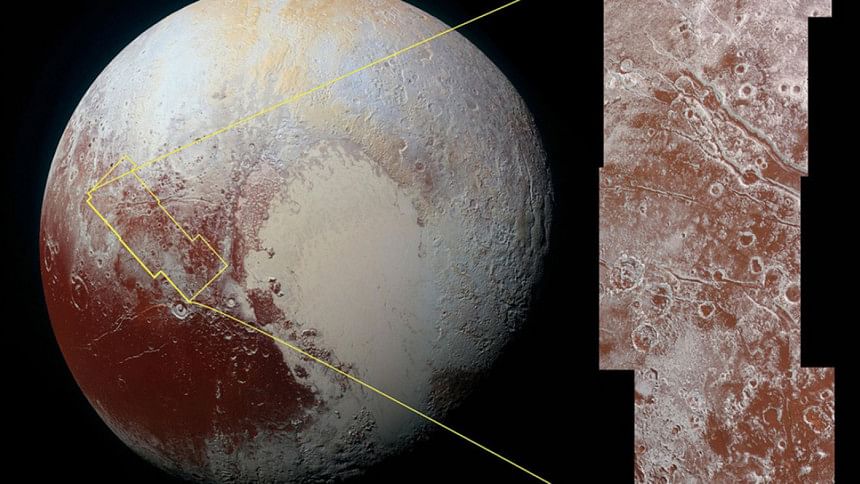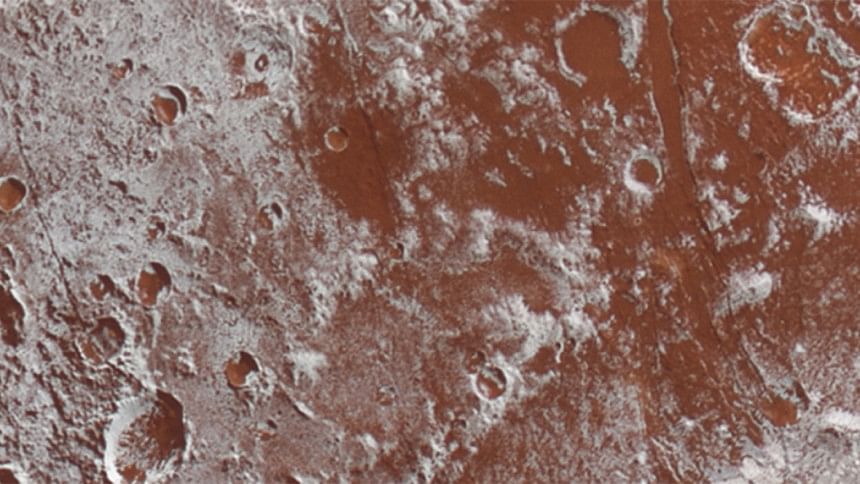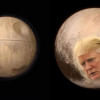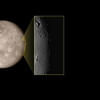New photos show Pluto's icebergs appear to float in sea of nitrogen ice

The new images of Pluto sent back to planet Earth from NASA's New Horizons spacecraft, show the dwarf planet's plains and 'icebergs' floating in a sea of nitrogen ice, reports Mashable.com.
The two most recent mosaics — sent by New Horizons — are the latest in a series of "best yet" photos slowly trickling back from the piano-sized probe on the outskirts of the solar system.
New Horizons made its close flyby with Pluto in July 2015.
One of the intriguing mosaics comes from the informally named Sputnik Planum — plains in Pluto's icy heart. An "X" actually marks the spot where scientists think an interesting pattern is playing out. Researchers have a hunch that the "cell" pattern in the plains comes from thermal convection in the nitrogen-dominated ices that fill this region, NASA said, according to Mashable.
According to Mashable, scientists think that Sputnik Planum — which might be a large impact basin — could harbor a miles deep "reservoir," NASA added. The nitrogen ice near the bottom of that reservoir would be warmed by Pluto's heat, causing it to bubble up before sinking again as it cools.
"This part of Pluto is acting like a lava lamp, if you can imagine a lava lamp as wide as, and even deeper than, the Hudson Bay," William McKinnon, New Horizons scientist said in a statement.
Modeling work done by the team suggests that the prominent "X" feature in the mosaic may be produced by the blobs of warmed nitrogen ice coming together over millions of years, NASA said.

And if that weren't enough, this part of Pluto even harbors some other amazing geology.
New Horizons scientists think that some of the dwarf planet's blocks of water ice are "floating in that large nitrogen ice reservoir called Sputnik Planum," New Horizons principal investigator Alan Stern said during a presentation at the American Astronomical Society annual meeting on Monday.
The new mosaic features some "icebergs" — the dark spots floating within the bright, nitrogen ice terrain of the plain.
The other mosaic shows a bit of the red, cratered surface of the dwarf planet, allowing scientists to closely examine the "bright methane ices" on crater rims in the image, NASA said.
Researchers are also interested in learning more about the red-colored tholins — bits of soot-like material formed when nitrogen and methane interact in the atmosphere — that appear to collect in craters and channels on Pluto's surface, the space agency added.
"Scientists say tholin deposits of that thickness aren't usually mobile on large scales, suggesting that they might be riding along with ice flowing underneath, or being blown around by Pluto's winds," NASA said in a statement.
New Horizons is still in the process of sending back the vast majority of its data as it continues its journey deeper into the solar system, on the way to a rendezvous with another small, icy object in 2019.

 For all latest news, follow The Daily Star's Google News channel.
For all latest news, follow The Daily Star's Google News channel. 








Comments